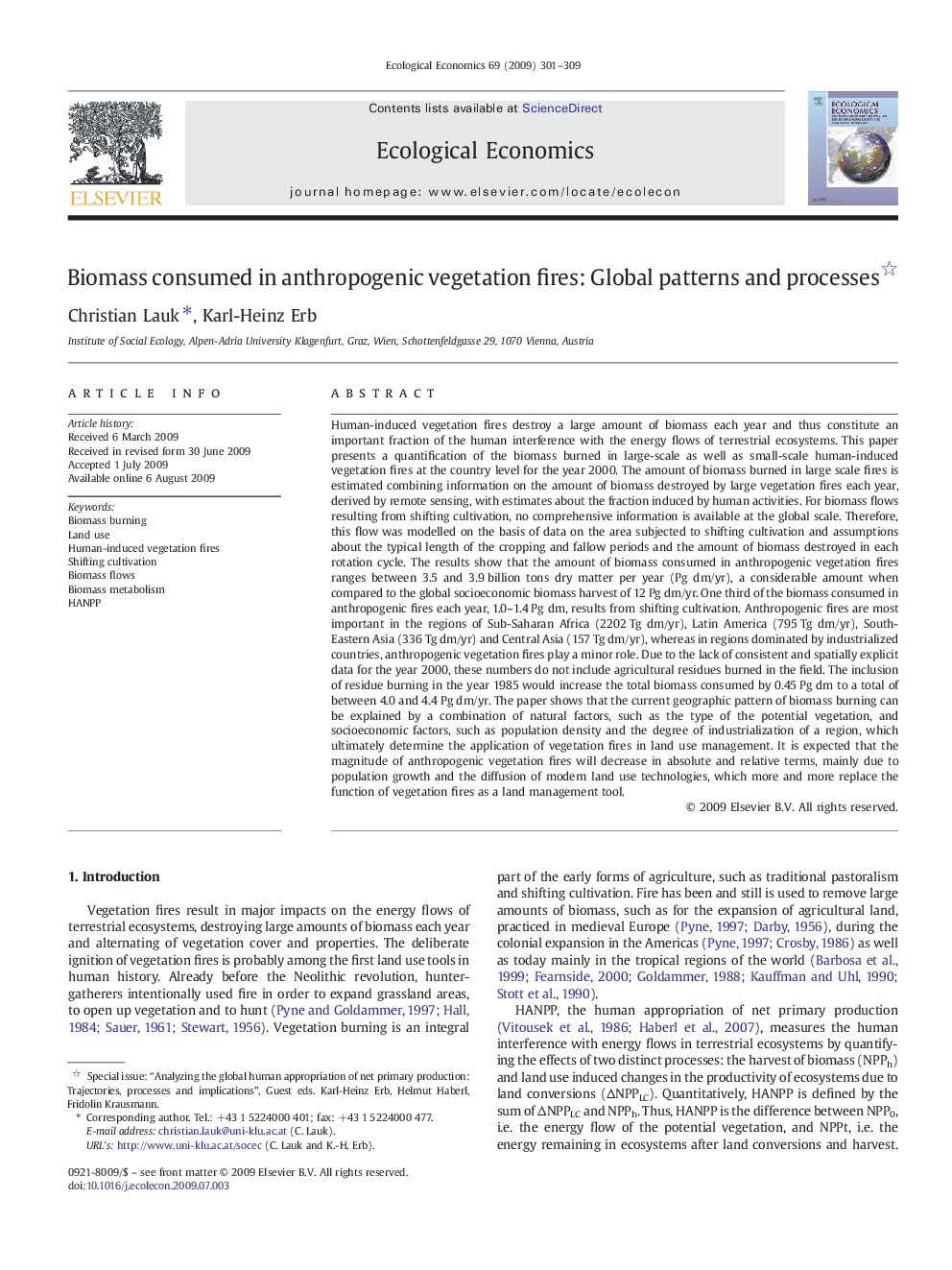| کد مقاله | کد نشریه | سال انتشار | مقاله انگلیسی | نسخه تمام متن |
|---|---|---|---|---|
| 5051257 | 1371118 | 2009 | 9 صفحه PDF | دانلود رایگان |

Human-induced vegetation fires destroy a large amount of biomass each year and thus constitute an important fraction of the human interference with the energy flows of terrestrial ecosystems. This paper presents a quantification of the biomass burned in large-scale as well as small-scale human-induced vegetation fires at the country level for the year 2000. The amount of biomass burned in large scale fires is estimated combining information on the amount of biomass destroyed by large vegetation fires each year, derived by remote sensing, with estimates about the fraction induced by human activities. For biomass flows resulting from shifting cultivation, no comprehensive information is available at the global scale. Therefore, this flow was modelled on the basis of data on the area subjected to shifting cultivation and assumptions about the typical length of the cropping and fallow periods and the amount of biomass destroyed in each rotation cycle. The results show that the amount of biomass consumed in anthropogenic vegetation fires ranges between 3.5 and 3.9Â billion tons dry matter per year (Pg dm/yr), a considerable amount when compared to the global socioeconomic biomass harvest of 12Â Pg dm/yr. One third of the biomass consumed in anthropogenic fires each year, 1.0-1.4Â Pg dm, results from shifting cultivation. Anthropogenic fires are most important in the regions of Sub-Saharan Africa (2202Â Tg dm/yr), Latin America (795Â Tg dm/yr), South-Eastern Asia (336Â Tg dm/yr) and Central Asia (157Â Tg dm/yr), whereas in regions dominated by industrialized countries, anthropogenic vegetation fires play a minor role. Due to the lack of consistent and spatially explicit data for the year 2000, these numbers do not include agricultural residues burned in the field. The inclusion of residue burning in the year 1985 would increase the total biomass consumed by 0.45Â Pg dm to a total of between 4.0 and 4.4Â Pg dm/yr. The paper shows that the current geographic pattern of biomass burning can be explained by a combination of natural factors, such as the type of the potential vegetation, and socioeconomic factors, such as population density and the degree of industrialization of a region, which ultimately determine the application of vegetation fires in land use management. It is expected that the magnitude of anthropogenic vegetation fires will decrease in absolute and relative terms, mainly due to population growth and the diffusion of modern land use technologies, which more and more replace the function of vegetation fires as a land management tool.
Journal: Ecological Economics - Volume 69, Issue 2, 15 December 2009, Pages 301-309